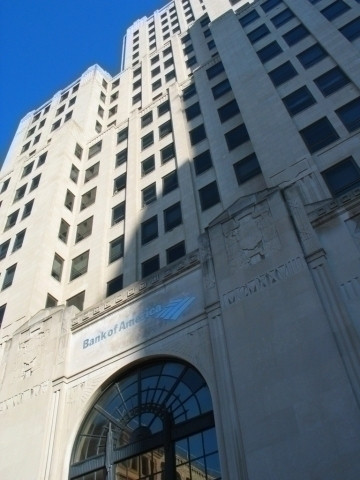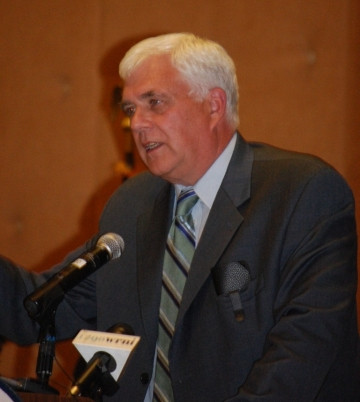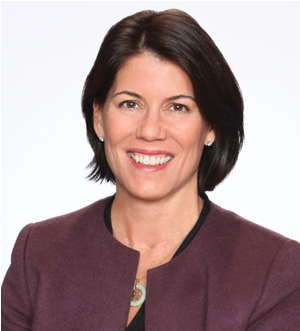Bishop: Our Love Hate Relationship With Amtrak
Thursday, January 19, 2017
A year ago the main concern of Rhode Island’s politicians was an Amtrak plan to detour high speed rail around Rhode Island. Now they have what they want and are railing against it. The NEC Future EIS details plans to follow the existing Northeast Corridor (NEC) including Rhode Island, but it proposes minor changes in eastern Connecticut and Charlestown to improve safety, speed, and weather resilience. This facet of the plan has evoked such a chorus of “Not in my backyard”, you would think it was a proposal to relocate Guantanamo Bay prisoners to the region.
The useful response last year and this year is: why on earth would we spend hundreds of billions of dollars to create an amusement park ride for the 10%? If this sounds a bit like Occupy Amtrak, it’s just our wonderment that not one RI politician is yet visibly opposed to this entire boondoggle.
When it comes to who we are subsidizing, Amtrak’s Madison Avenue consultants have provided a convenient measuring stick. In touting the advertising power of the Acela onboard magazine, Arrive, they brag about having the richest demographic reach of any northeast periodical with a median reader income of $186,500 - outpacing New York, Boston, Philadelphia and the Washingtonian.
GET THE LATEST BREAKING NEWS HERE -- SIGN UP FOR GOLOCAL FREE DAILY EBLASTAmtrak plays fast and loose with its accounting , pretending that the Acela is actually profitable to deflect criticism. But even Amtrak concedes they mean on operations not capital costs, i.e., the passengers don’t pay for the trains or the tracks! So we’re being asked to subsidize a $150 billion dollar upgrade (read a trillion) for an economically marginal executive limo service on rails.
High Speed is NOT an obvious rail priority
The elite urbanists who promote a European vision of sleek intercity rail transit are, of course, right about their own tastes – as we can see from Acela’s boasting about the rich college educated folks who read its magazine. They just mistake the comfort of average Americans with their cars and with affordable airfares in the deregulated market for longer trips.
There is some consumer sentiment for commuter rail in major metropolitan markets. Rhode Island mistook Wickford for such a place, but even that boondoggle does not erase the convenience, quality of life and congestion mitigation effects more broadly associated with commuter lines serving Boston and New York.
Ironically, intercity rail is essentially in competition with commuter rail with differing speeds and more stops clogging tracks and complicating operations. This effect is a major cost driver in the NEC Future EIS.
There is also competition between passenger and freight service. Indeed, the comparative criticism of Europe as passenger rail paradise and America as a passenger rail desert ignores the fact that the prevalence of freight rail is the inverse. Europe can’t put much of its freight on the rails because it moves more slowly and less predictably than the speeding passenger trains.
The NEC is not full of vast trainloads of mineral, fuel and agricultural commodities that regularly crisscross the American heartland, but has notable chokepoints between marine terminals and inland routes. Not only are these another major cost driver in the NEC Future EIS, but the false narrative of the Acela as some wunderkind to be duplicated elsewhere makes high speed rail on the NEC a potential threat to freight rail across the country. Amtrak is currently empowered to subordinate freight movement to its passenger operations nationwide.
A new administration, a new direction?
What will the Trump/Chao DOT think of the NEC Future? Trump surely appreciates that deals require facetime. Putting people together for commerce, culture and political logrolling along the DC-NYC-Boston axis is an important part of the economy for the region. And there is a cohort of younger hipsters (weren’t we all once) that isn’t insistent on going home to the suburbs at night but would think nothing of catching the Acela from Boston to see a show in NYC. But if this high speed service is critically desired by the financial, digital, research and creative services complex as a business tool and for the quality of life of their urban worker bees, these riders and their industries could pay for it. Trump’s idea for infrastructure is to partner with major beneficiaries and to leverage public capabilities with private investments.
It can’t be denied, as our state officials look on, that being on the road to somewhere else is really all we’ve got . We took ourselves off the ‘silk road’ for goods we had historically occupied when we spurned the opportunity to pioneer a major container port in Rhode Island. We used to be somewhere when we coupled our marine trade advantages with unparalleled industrial skills. Now our only claim to fame is being between Boston and New York. If there is to be a rail, our politicians want to be on it, as do those who represent the alternative, Hartford and Worcester. There was competition for this ‘privilege’ which we don’t seem to appreciate having won. Indeed, these track shifts were part and parcel of the alternative we begged Amtrak to choose.
Looking At It From A Business Stand Point.
If Secretary Chao doesn’t simply fire all the planners looking to waste hundreds of billions on high speed rail, will she at least look at the competitive model of The Apprentice? I’m sure her boss could get her the DVD. Why not put all the possible routes back on the table and chart the service along the route whose representatives put together a plan that poses the least cost, the most efficiency and safety, the least opposition, the most shovel ready capacity and the most private investment? Our politicians from southeastern Connecticut and southwestern Rhode Island should be digging in to figure out how to make this work, not lying in front of the bulldozers (assuming, since not one has spoken up, they won’t do the smarter thing and oppose the high speed boondoggle rail altogether).
Although public investment in high speed rail is unjustified, the Amtrak plan is actually a fairly thoughtful approach if you were going to run a railroad. The proposal plans to eliminate two of the sharpest bends between New York and Boston, one that snakes along the New London waterfront and the other that rounds the hills between Burdickville and Kenyon, at the nexus of Chariho. This isn’t just a question of cutting a few minutes off the trip, but is a question of safety -- as anyone who has followed the standing headline “train goes off curve” is aware.
It is complicated by hills and swamps, which are why the Charlestown curves exist to begin with. And tunnel design isn’t as simple when dealing with the air pressure generated by speeding trains. But, as with many infrastructure projects, engineering is not the chief impediment. Environmental and NIMBY obstructionism remain the reason that south coast Massachusetts is not served by commuter rail. The costs larded on to this extension by green groups and towns, many of which already have MBTA service, proved too much for even Massachusetts. This has left Fall River and New Bedford as the poor stepchildren of the Boston economy, a place to toss a little litter on your way to the Cape. And in Rhode Island, we wasted $40 million for an unused parking garage because the locals didn’t want surface parking on the Wickford side of the tracks. It is government’s job to weigh these issues – but not to be paralyzed or bankrupted by them.
In Connecticut ,which would experience a more noticeable change, Amtrak cleverly proposes a Route 95 alignment, paralleling what is already a major transportation route dividing communities while serving them. This could be accomplished without so major an effect on Old Saybrook by joining 95 west of town. As Amtrak has said, their lines on the map are representative, not precise. If Rhode Island and southeastern Connecticut want to be on the road to somewhere, it is the responsibility of our politicians not simply to object, but to see how this might be facilitated.
If We're Spending The Money, Let’s Look At The Best Option.
Careful planning with those most aware of local circumstances could alleviate some of the concern – indeed that should have been the ambit of a meeting yesterday between town officials and congressional staff in Providence, instead of solidarity in opposition. All but ignored are important potential benefits of moving the rail line inland. If anything, the Amtrak proposal does not go far enough in taking regional lines with it to its new alignment. This would greatly improve shore access and provide for public amenities and development. The current tracks also hamper marine traffic. And the proposed alignment actually preserves a New London station within 1/3 mile of ferry docks, almost as close as at present.
The Westerly route has posed some consternation as the tracks would rejoin the existing railbed by briefly crossing well fields that provide town water at a perpendicular for perhaps 1/10th of a mile. Even forgetting that this is a straight stretch with little potential for derailment, what lasting environmental spills are posed by an accident of an electrically powered train? If regional service – and the long off restoration of commuter service to Westerly -- were to be powered by diesels those lines could be swung south of the well field into the existing Westerly station.
And if other commuter stations are eventually desired they could be easily accessed from the highway, and provide parking outside the tightly clustered villages where the old lines run. With a little tweaking there is much to like here, but you wouldn’t know it from listening to our political leaders.
The response to the NEC Future EIS has been far too positive on the idea of spending vast sums on high speed rail and far too negative on the plan itself, ignoring the extent of accommodation Amtrak has already expended and lacking a sense of commitment to address speed and safety goals while balancing parochial interests.
Related Slideshow: Power List - Business
Related Articles
- Bishop: The Soft Under Belly of Rhodeworks - A Connector to Nowhere
- Bishop: 38 Stabilizations - Neverending Prov Tax Giveways are 38 Studios Redux
- Bishop: Post-Toll Impasse Between Public and Political Will
- Bishop: 6/10 Connector - The $800 Million Mile
- Gencarella & Bishop: Billion Dollar ‘Big Dig’ - Fewer Bridges, Fewer Cars, Nearly Double The Cost
- NEW: Episcopal Bishop Apologizes for Sexual Abuse at St. George’s
- Bishop: Calm Yorke More Outrageous Than Brash Trump
- Bishop: Constitution Day at Brown - What’s the State of Our More Perfect Union?
- Controversial Comments by Bishop Tobin Over the Years
- Bishop: For Whom the Bill Tolls
- Bishop: Structural Changes to Address Structural Deficit
- Bishop: Welcome Joe Biden, to Roads That Don’t Work
- Bishop: Sleepy South County or Races That Matter?
- Bishop: Trump for President
- Bishop and Fired Catholic Music Director Get Into Media War
- Bishop: Have an Alt-Thanksgiving
- Bishop: Not Much Difference Between Mainstream Media & Fake News
- Bishop Tobin: Catholic Church Had “No Choice” in Firing Gay Music Director
- Gencarella & Bishop: Political Football v Public Safety
- Bishop: Tax [Breaks] and Spending
- Bishop: Life in the Slowlane
- Bishop: It Takes [The] Village [People]
- Bishop: Revolutionary Providence Primaries
- ABC6’s “In The Arena” Features Paolino and Bishop Tobin






















